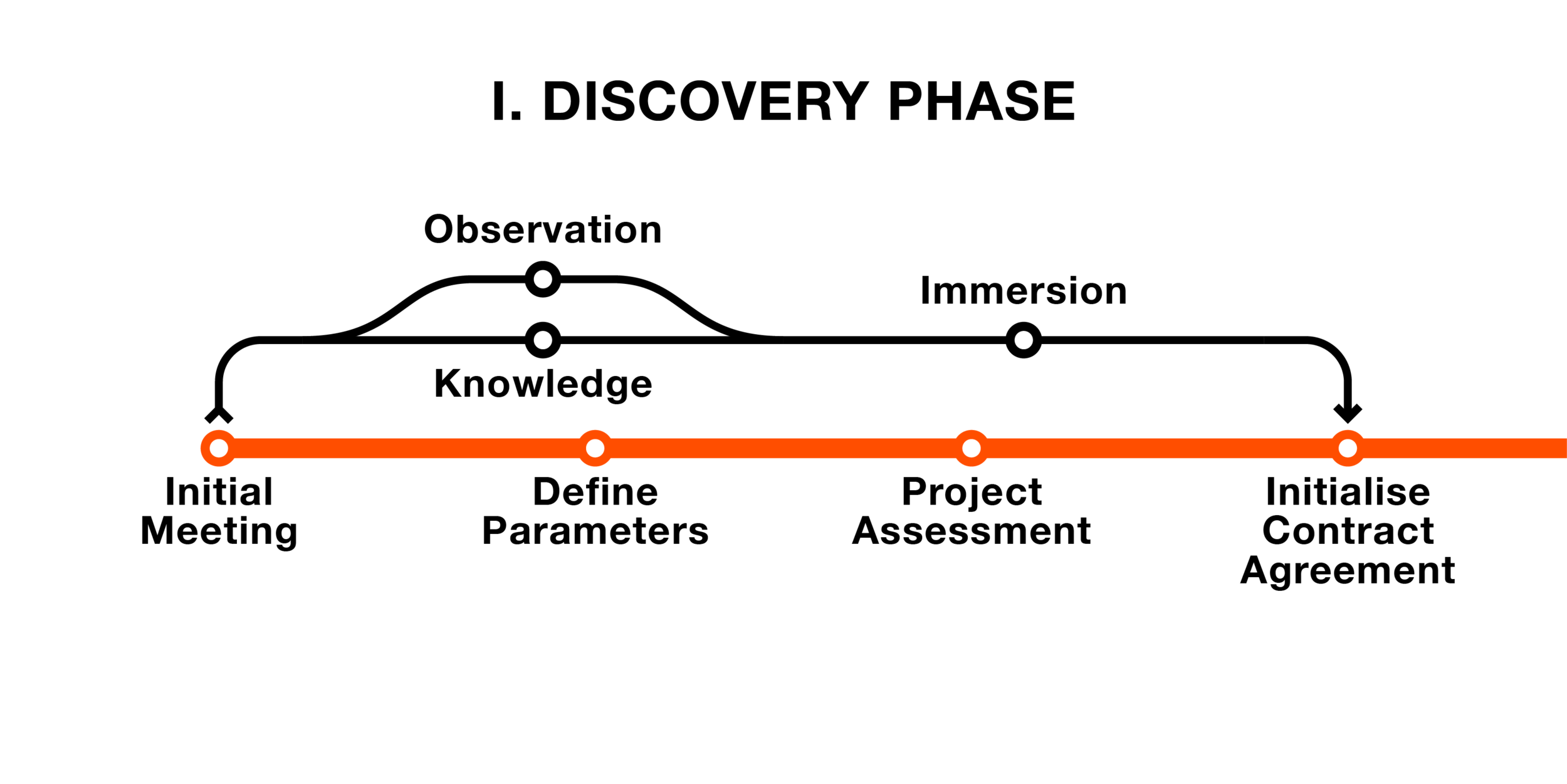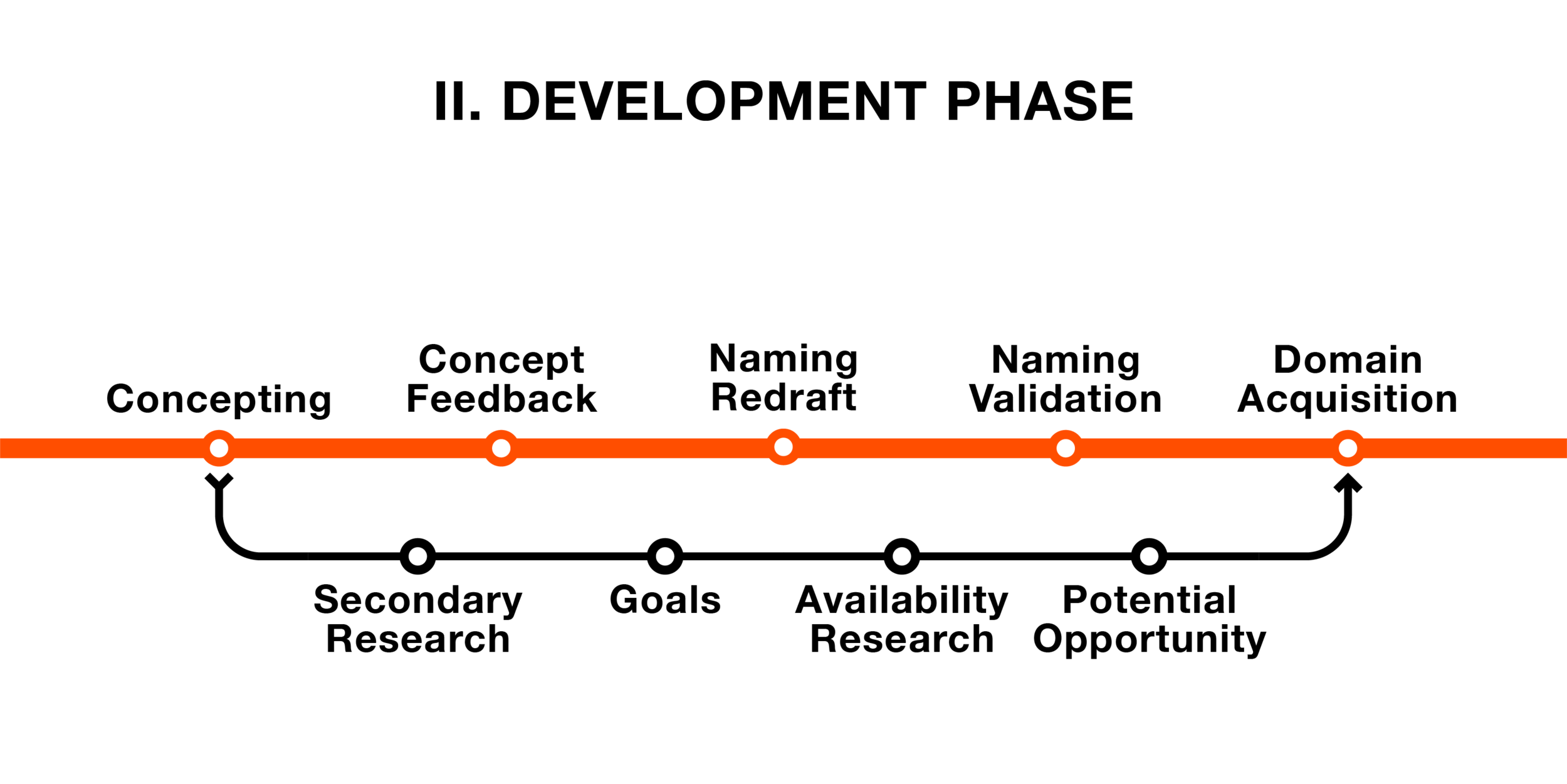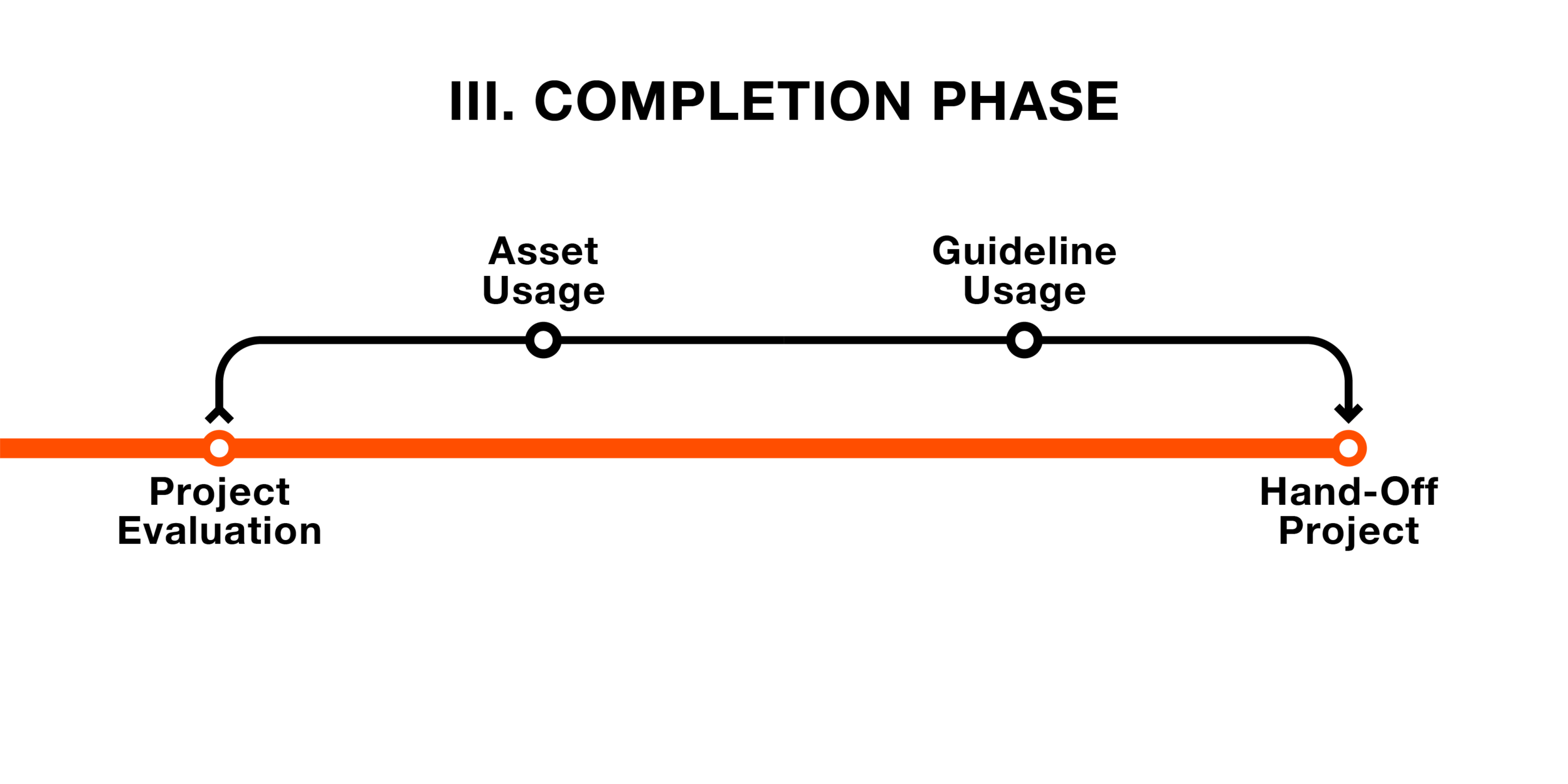Website: Domain
Not just any name.
#Branding #Identity #SEO
A practical strategy for the modern brand.
Extending your brand identity.
Domains are just as important as brand names. And with the ProjektID website domain service, you'll receive tailored names that match your brand, while utilising appropriate extensions. If your brand name is not averrable for domain grabbing, then alternative domain nomenclature will be implemented. It will need to be logical & rememberable.
Digital identity.
Domains can act as a brand, while being an extension to unify the experience.
Staking your claim.
A branded domain will eliminate the possibility of losing pulled traffic from your website.
Take control.
Streamline interactions with your website, blog, social page or storefront.
Super protection.
Your business is your heart and soul. That’s why a domain can yield digital real estate exclusivity, that no one else can use. Making your brand that more sustainable.
Multi-directional.
Owning multiple domains with alternate extensions is a no brainer. These domains can function as primary gateways to a website or can forward traffic to another domain.
Only professional.
All it takes is one domain to create an array of many branded solutions. For a website, business email and much more, a branded domain will certainly boost appeal.
Custom solution.
If the price seems too good to be true then it most likely is not a custom service. ProjektID provides quality bespoke solutions.
Brand asset.
Your business is only acquiring a solution to solve a problem you are also gaining the upper hand to surpass performance past your competitors.
Step-by-step.
Throughout a ProjektID service, you will be kept in the loop through the entire design and development of your branded solution.
A competitive investment.
Utilising the proficient domain registrar Godaddy, ProjektID can capture brand-defining domains; while we can help to create a Godaddy account for you, allowing your business to interconnect with a diverse range of platforms. This includes seamlessly integrating your branded domain with any Squarespace website.

Problem-solving principles.
At ProjektID, we embrace 5 principles that allow us to provide a bespoke solution that solves your business’s problems. There is no cut and paste models in our services, only effective planning, developing, designing and implementation of work that provides your brand with meaningful value.
-
ProjektID can develop a strategy that works in tandem with your brand and the products/services that you provide to your customers/clients. First, we will engage in an intuitive workshop, which will allow both parties to deduce essential information about your business, including:
• Qualitative and quantitative industry data.
• Brand story and core unique characteristics.
• Goals and challenges.
• Strengths and weaknesses.
• Opportunities and threats.
-
Interacting with an existing audience is great for generating input. This can assist in focusing on perceptions of the products/services and the strategic B2B positioning too. Typical questions include:
• What do they like about your products/services?
• What benefits do they receive?
• Were they a customer/client of a previous business?
• Are there any recommendations for improvement?
-
The voice and personality of your brand are unique. Configuring these to flow throughout your whole business will avoid confusion. Hosting productive cross-functional meetings is an optimal method for integrating the brand positioning and mission statement together with:
• Strategies.
• Mock-ups.
• Copywriting.
• Online and offline operations.
• A guidelines dossier.
• An identity manual.
-
Your business’s target market share the same values, behaviours and personality traits as your brand. Now is the time to raise a community. A strong brand needs strong business assets, such as:
• Branded website development and designing.
• Powerful video marketing.
• Copywriting, social media and digital marketing.
• Graphic design assets.
-
When launching the business solution, developed and designed by ProjektID, you have a unique opportunity to decide how you wish to market your brand in the industry. Managing and maintaining the business assets is key for short-term and long-term growth. If the business assets are ignored then there is a potential for a collapse in performance.
Keeping an eye on the business’s assets metrics and feedback can control the execution of the launch and make adjustments if needed to achieve your brand’s objectives for the end-goal to stick the landing.
“It’s not just the products, services or blogs that gain your website attention, but also a simple yet catchy domain name with the right extension”



Rough order Of magnitude.
A Rough Order of Magnitude Estimate (ROM estimate) is a ‘ballpark’ estimation of a project's scale and cost. ROM estimates are not representative of every project budget, rather a comprehension of the scope-to-budget ratio. Every project is unique and requires a particular range of solutions to assist a business in solving problems. Please do contact us to organise an initial meeting to discuss your project (scope, budget & timeline). Keep in mind that the price reflects the content, skill and technical complexity of this solution and in turn can generate better value for your business.
Medium Business
Approximate Duration: 3 Months
Small Business
Approximate Duration: 2 Months
Personal Business
Approximate Duration: 1 Month
€5,785.37
€2,431.34
€282.87
-
Create a Godaddy account & generate a log-in password.
-
Organise legal business information that will be associated on the domain(s). Also, apply any business tax information to the Godaddy account for business-taxation assurance.
-
For better account security, set up 2-step verification (2SV), also known as Multi-factor authentication (2FA). This is an electronic authentication method in which a device user is granted access to a website or application only after successfully presenting two or more pieces of evidence to an authentication mechanism: knowledge, possession, and inherence. Gain assistance with enhancing log-in security in a Godaddy account, and protect domain assets.
-
The perfect domain lets people know at a glance why you're online and why you're awesome. Attain 10 custom-branded domains with well-suited extensions. Alternatively, attain 1 custom branded domain with 10 extensions. Additional charges may be applied to exotic domain names.
-
The perfect domain lets people know at a glance why you're online and why you're awesome. Attain 5 custom branded domains with well-suited extensions. Alternatively, attain 1 custom branded domain with 5 extensions. Additional charges may be applied to exotic domain names.
-
The perfect domain lets people know at a glance why you're online and why you're awesome. Attain 1 custom branded domain with a well-suited extension. Additional charges may be applied to exotic domain names.
-
Domain hosting is an internet service that provides management of a domain name, such as, example.com. Domain hosts use Domain Name System (DNS) records to connect a domain name with email, websites, and other web services. Attain domain hosting for 5 years per domains/extensions.
-
Domain hosting is an internet service that provides management of a domain name, such as, example.com. Domain hosts use Domain Name System (DNS) records to connect a domain name with email, websites, and other web services. Attain domain hosting for 3 years per domains/extensions.
-
Domain hosting is an internet service that provides management of a domain name, such as, example.com. Domain hosts use Domain Name System (DNS) records to connect a domain name with email, websites, and other web services. Attain domain hosting for 1 year.
-
Domain management, or domain name management, refers to the ongoing tasks of keeping a personal or corporate domain(s) stable, secure, and functioning with out issues. Attain 90 days domain management.
-
Domain management, or domain name management, refers to the ongoing tasks of keeping a personal or corporate domain(s) stable, secure, and functioning with out issues. Attain 60 days domain management.
-
Domain management, or domain name management, refers to the ongoing tasks of keeping a personal or corporate domain(s) stable, secure, and functioning with out issues. Attain 30 days domain management.
-
Assistance with connecting a custom branded domain to a Squarespace website and troubleshooting any issues with connectivity. Organising DNS settings from a Godaddy and confirming connectivity from within the Squarespace settings.
-
Assistance with connecting a custom branded domain to a Email hoster (Gmail or Outlook) and troubleshooting any issues with connectivity. Organising DNS settings from a Godaddy and confirming connectivity from within the Email hoster settings.
-
Domains are open to be purchased by anyone in the world, so long as the domain is available. If a brand name is common then the chances are that multiple variants of the domain have already been captured. Analysis and identification of business competition, along with Analysis and identification of competition risk levels.
-
Domains are freely available for purchase by anyone. These can act as roads. The more roads that connect to a city centre, the more potential that consumers will go shopping. Defending a brand via domain dominance is a logical way in business sustainability.
-
The guidelines dossier outlines a set of rules for the brand to abide by in order to maintain a high level of quality with the business asset.
-
Throughout the project, receive ongoing & regular technical consultations. Gain an in-depth understanding of the project & phases, business asset(s), and strategic & technical guidance that assists your brand.
-
Once a project is complete and 100% of the budget is fullfiled, a certificate of ownership will be provided.
Service roadmap.
Comprehending the complete development processes is key in maximising the performance of a project’s success. ProjektID works in tandem with clients in order to maintain operational control to every single detail.
-
Approximate Duration: 15 Days
Approximate Duration: 8 Days
Approximate Duration: 3 Days
Discovery Phase
In the Discovery phase, ProjektID will need to initially define the scope of the project. This is done through an initial meeting with the client. Then the project parameters can be defined along with an assessment of the project. Once all of this is complete, the project ‘Authorisation To Proceed’ (ATP) Contract will need to be agreed to and the project will commence.
-
Approximate Duration: 69 Days
Approximate Duration: 47 Days
Approximate Duration: 25 Days
Development Phase
In the Development phase, the solution will undergo creation. A demonstration live model will then be created. All of these will be displayed to the client for feedback and agreement.
-
Approximate Duration: 15 Days
Approximate Duration: 8 Days
Approximate Duration: 3 Days
Completion Phase
In the Completion phase, both ProjektID and the client will evaluate the project together. Once the project has fulfilled the objectives in the whole project scope, the project will be handed off to the client.
Project glossary.
A glossary is an alphabetical list of terms in a particular domain of knowledge with the definitions for those terms.
Budget
The amount of money that a person, group, or organization has available to spend on a ‘project’. A budget defines the maximum and minimum values allocated to generate a particular outcome.
Project
A piece of planned work or activity that is completed over a period of time and intended to achieve a particular aim.
Project Complexity
The condition of lacking simplicity of a problem. A set of problems that consists of many parts with a multitude of possible interrelations, being of high consequence in the decision-making process that brings about the final result.
Project Scale
A determining factor from ‘Project Scope’, is most simply defined as the degree and extent to which project management practices are formally applied. Taking a "one size fits all" approach is unwise and impractical.
Project Scope
Features and functions of the scope of work needed to complete a project. Scope involves gathering information required to initialise a project, and the features the project would have that the client requires.
Project TimeLine (Duration)
A period of seconds, minutes, days, hours, weeks, months, or years, in which something may happen or in which something may occur.
Quality Control (QC)
This is a process through which a business seeks to ensure that product quality is maintained or improved. Quality control requires creating an environment in which a project strives for perfection.
Roadmap
Provides a strategic overview of the major elements of a project. This usually includes objectives, milestones, deliverables, resources, and a planned timeline.
Service Element Deliverable (SED)
A sub-division of Project Scope, a Service Element Deliverable is an action that is performed within a specific aspect of a project in order to serve a purpose. Multiple actions together (SEDs) compose the scope of work.
Stage (Phase)
A collection of activities within a project. Each project phase is goal-oriented and ends at a milestone. Reaching these milestones means the project progresses. Each phase can be divided into sub-phases.
Stage (Plan)
These include things to do, short-term and long-term objectives, and other actions that affect project completion.
Stage (Progress)
These include milestones, goals achieved, finished tasks and validated items that contribute to project completion.
Variable
A variable is any factor, trait, or condition that can exist in differing amounts or types. A project usually has three kinds of variables: independent, dependent, and controlled.
Variable (Control)
A control variable, or constant, in project development is an element which is constant and unchanged throughout the course of the project. The control variables themselves are not altered throughout any project scale.
Variable (Dependent)
The variable is measured during project development and is 'dependent' on the independent variable. In a project, the effect on the dependent variable is caused by altering the independent variable.
Variable (Independent)
The variable being manipulated during project development and is assumed to have a direct effect on the dependent variable. This determines the cause and effect of a project.
Project scale.
‘Project Scale’ is a determining factor from ‘Project Scope’ and ‘Project Complexity’, most simply defined as the degree and extent to which project management practices are formally applied. It is unwise and impractical to take a ‘one size fits all’ approach to each project, as there will be unique problems to solve along with varying scales, scopes and complexities to assess.
Project Scale = Project Scope X Project Complexity
Project variable.
A variable is any factor, trait, or condition that can exist in differing amounts or types. A project usually has three kinds of variables: independent, dependent, and controlled.
Control Variable
The control variable, or constant, in project development is an element that is constant and unchanged throughout the course of the project. The control variables themselves are not altered throughout any project scale.
Quality Control
Independent Variable
The dependent variable is what gets measured during project development, and is 'dependent' on the independent variable. In a project, the effect on the dependent variable is caused by altering the independent variable.
Timeline
Dependent Variable
The independent variable is what gets manipulated during project development, and is assumed to have a direct effect on the dependent variable. This determines the cause and effect of a project.
Budget
Our projects.
Developing a specific strategy for a business in a unique situation, within both the digital and physical world, has allowed us to vary our mindset to solve specific problems. Take a peek at some projects that we have been excited to work on.







2019